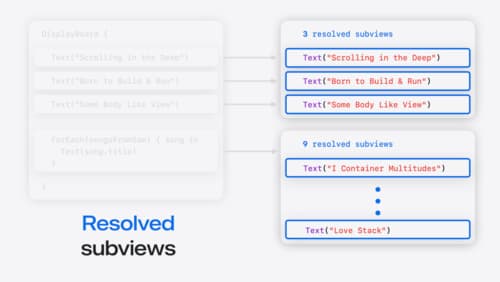What is structural identity in SwiftUI?
Asked on 2024-07-31
1 search
Structural identity in SwiftUI refers to the concept that SwiftUI views are value types defined using structs instead of classes. This is because SwiftUI views are descriptions of what the current state of the UI should be, rather than long-lived object instances that receive imperative commands over time. SwiftUI takes these descriptions and creates an efficient data structure to represent them, maintaining this data structure behind the scenes to produce different outputs, such as what's shown on screen, gestures, interactive aspects of the view, and its accessibility representation.
This approach allows for breaking up one view into multiple views without hurting the performance of the app, enabling better code organization without compromising performance. Composition is a key part of SwiftUI, allowing for the creation of complex user interfaces by combining simpler views.
For more details, you can refer to the SwiftUI essentials session.

SwiftUI essentials
Join us on a tour of SwiftUI, Apple’s declarative user interface framework. Learn essential concepts for building apps in SwiftUI, like views, state variables, and layout. Discover the breadth of APIs for building fully featured experiences and crafting unique custom components. Whether you’re brand new to SwiftUI or an experienced developer, you’ll learn how to take advantage of what SwiftUI has to offer when building great apps.

Demystify SwiftUI containers
Learn about the capabilities of SwiftUI container views and build a mental model for how subviews are managed by their containers. Leverage new APIs to build your own custom containers, create modifiers to customize container content, and give your containers that extra polish that helps your apps stand out.

Explore Swift performance
Discover how Swift balances abstraction and performance. Learn what elements of performance to consider and how the Swift optimizer affects them. Explore the different features of Swift and how they’re implemented to further understand the tradeoffs available that can impact performance.
